How to use a large format camera as a bellows for digital macro photography
It can be pretty easy to use a large format camera a bellows for a digital camera. And because of the larger image size, you can get better magnification than you could with a standard 35mm-format macro lens. And you might also have camera movements that you can take advantage of.
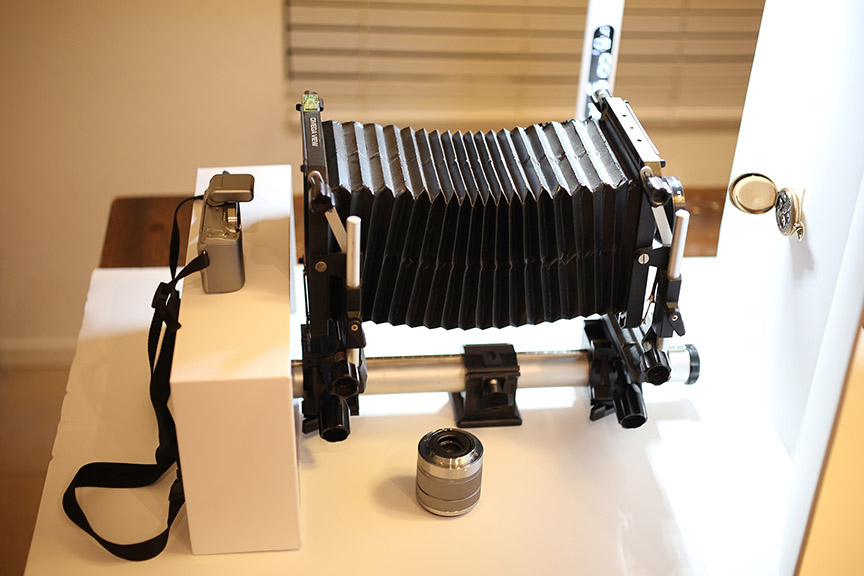
What you'll need
You won't need much, but the things you do need will be deal-breakers if they're not avaiable:
• A digital camera that allows you to shoot without a lens. This will let your digital camera be used as the digital sensor for the large-format camera. Disclaimer: Taking the lens off a digital camera could cause dust and debris to get onto your camera's sensor. Or it might cause some other problem. And using a digital camera without a lens might cause a problem for the camera. I do it all the time and have not run into any problems, but you have to decide if it's something you want to risk.
• A large-format camera. It can be either a field camera or view camera. The 4-by-5 format cameras were very common and are widely available on the resale market. They were used with film that was 4-by-5 inches, about the size of a postcard.
• A large-format camera lens. It can just be a regular, non-macro lens. You could also consider using an enlarger lens, which offers a flatter image field, much like a typical macro lens. But lens choice isn't as critical here as it would be for film work.
• A removable back. You'll want to make sure that everything in the back of the large-format camera can be removed to make room for the digital camera.
Typically, large-format cameras would have a removable cartridge that held a focusing screen - a sheet of ground glass. After an image was focused, the ground glass would be removed and replaced with a film holder. In these cases, you're good to go because both the ground glass and film holder are removable.
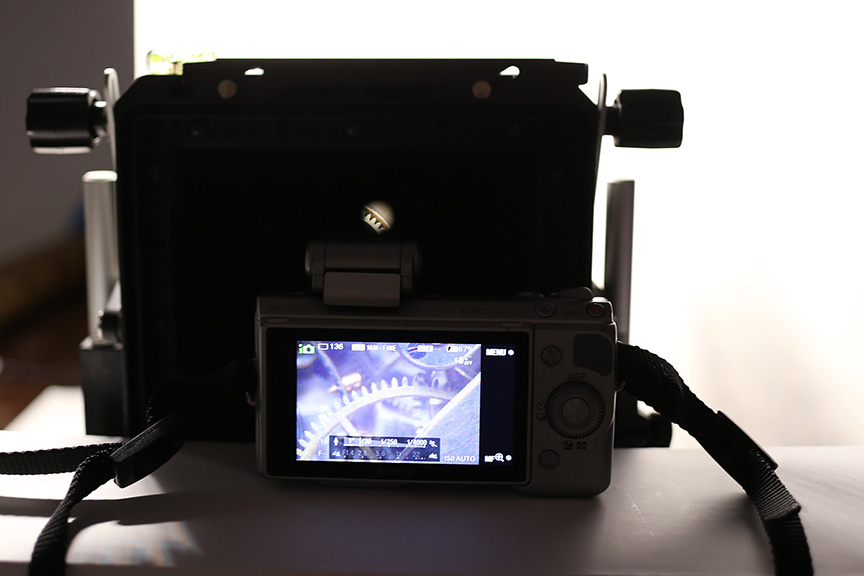
Tips for buying large-format gear
Some large-format cameras are cheaply priced on eBay and Craigslist. Also some of the major online retailers of camera equipment, such as bhphoto.com and amazon.com, have used equipment for sale.
Large-format cameras generally came in two flavors: view cameras and field cameras. View cameras aren't conveniently portable. They were meant for studio work and they tend to be bulky, non-collapsible and difficult to carry for long distances. The field cameras tend to be far more portable, collapsible and more easily taken out into the field. But, the field cameras also tend to cost more than the view cameras.
The large-format cameras that you'll find on the resale market are often several decades old and worn. Their condition, though, matters less for digital work than for film. When shooting film, light leaks in the bellows were a major problem, one that often would be discovered only after the film was developed. With digital, a quick test shot will tell you if you need to throw a dark piece of fabric over the bellows to protect from light leaks, or to make some other adjustments, such as realigning your shot.
Good lenses are fairly cheap and easy to come by. Manufacturers made a lot of 90mm lenses for 4-by-5 cameras back in the day and they are readily available for resale under $200. These lenses were as common for 4-by-5 cameras as 50mm lenses are for 35mm-format cameras. And, the lenses tended to be pretty good.
The 4-by-5 90mm lenses are wide angle lenses, equivalent to about 28mm for a full-frame 35mm-format camera. A 300mm 4-by-5 lens would work out to about 100mm for a 35mm camera.
If you find a lens or camera for sale, just Google the make and model information and you'll likely find out pretty quickly if it's what you want.
My recommendations for gear
I prefer a view camera. Yes they're klunky and difficult to carry with you on a hike through a mountain pass, but they're great for taking photos on a kitchen table. And they're cheap. A decent view camera and lens can be achieved for $200 or less.
For a lens, I went with the 90mm. I thought a wider lens, like a 65mm, for example, might have too much distortion for macro work. Also, with a 90mm lens, you can get greater magnification by extending the view camera's bellows than you would with a longer lens. So, more flexibility there.
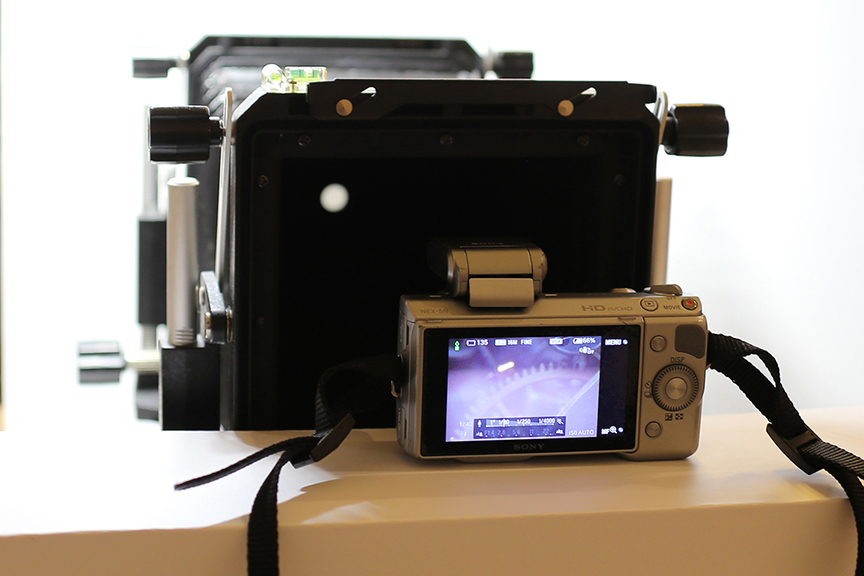
Tips for shooting large-format + digital macro
Maybe you want to photograph a single flower, the inside of a mechanical watch, or an old coin. An easy way to get started is to set everything up on your kitchen table. You can easily control the lighting by grabbing a few table lamps or flashlights and waiting for nightfall.
You can compose your shot with the large format camera using the ground glass. Or, you can remove the ground glass and use a digital camera to compose the shot. For that, take off the digital camera's lens and switch to live view, if that feature is available.
Remember to adjust the aperature of the large-format lens to whatever you need for the shot.
If the lighting on your subject is strong enough, you can hand-hold the digital camera. Otherwise, set up a tripod or put the digital camera on a stack of books or magazines.
A 4-by-5 camera will project an image that's roughly a dozen times larger than the area of a full-frame 35mm sensor, and roughly two dozen times larger than a typical crop sensor. So, if you want, you can "tile" your shots and, with image editing software such as Photoshop, you can merge those tiles into a single image that's substantially larger than the digital camera's sensor.
An example of large-format + digital macro
The two photos below show a glimpse of what you can do, using a large-format camera as macro bellows. The first image is taken with a full-frame 35mm digital camera with a 1:2 ratio 50mm macro lens. The second image is taken with the set up described in this article, with a lens-less, full-frame 35mm digital camera as the view camera's back:
A normal macro shot with a 35mm-format camera and lens:
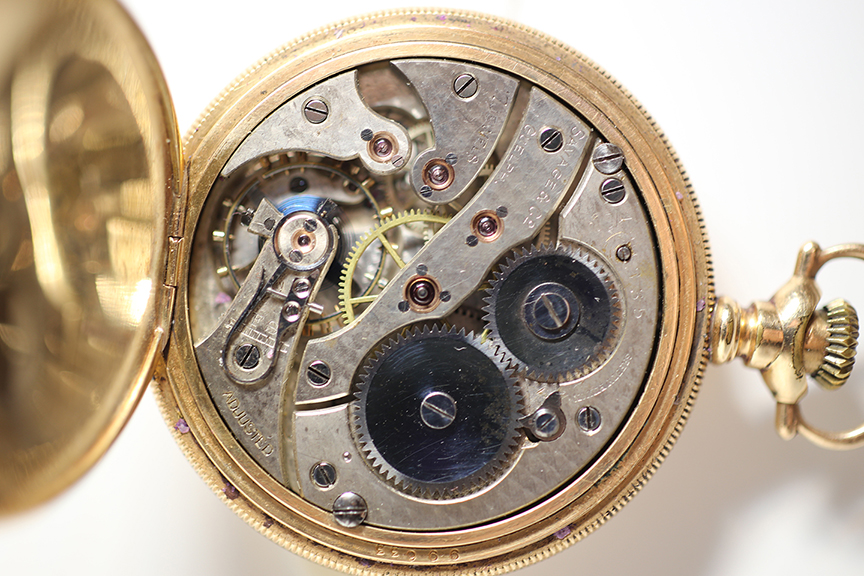
A view camera + digital macro shot:
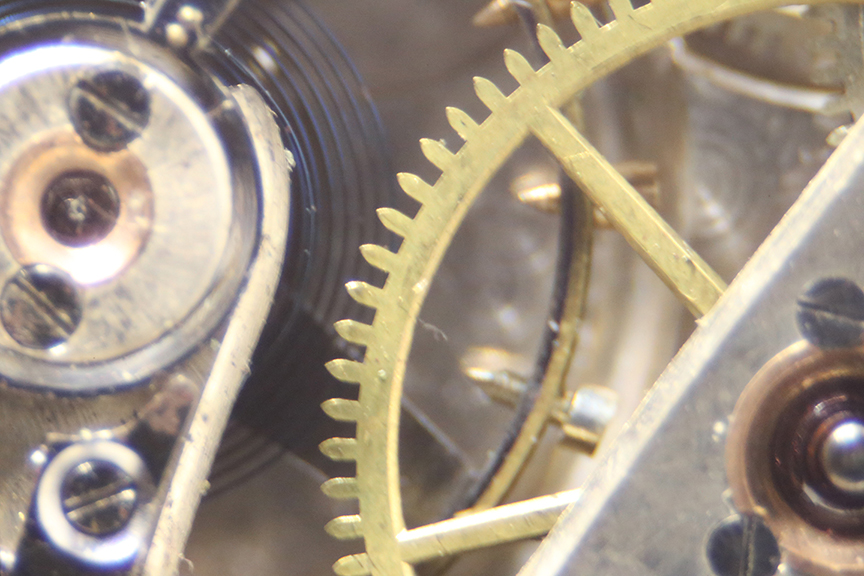
This also is an uncropped image, of the same pocket watch. This image uses the Canon 6d, without a lens attached, as the "back" for the view camera. As you can see, this approach allows for a much greater magnification of the subject.